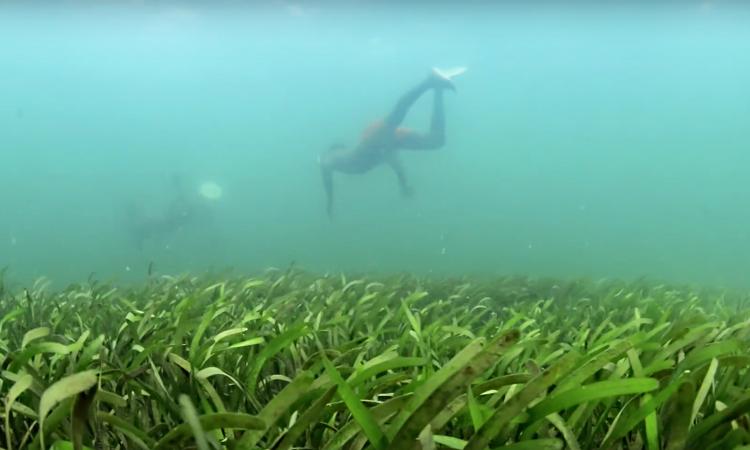
The Palk Bay is an ecological paradise located between the island nation of Sri Lanka and the South East Peninsula India. The region separates the coastal areas of Tamil Nadu from the northern parts of Sri Lanka. From the coast of Tamil Nadu to that of Sri Lanka, the water rarely run deeper than 15 metres. The bay is one of India's most prominent fishing haunt.
The surface area within the international borderline on the Indian side is estimated to be around 6000 sq km, of which the area reserved for small-scale fishers is about 1000 sq km, leaving some 5000 sq km or roughly 2-3 km per each of the approximately 2000 trawlers operating in the Palk Bay.
“In 1965, trawling was initiated in the bay. The government gave loans and subsidies and encouraged people to do it. In those days, the fish catch was great. Compared to the old practices such as gill nets, trawling brought in more profits,” says A.Thajudeen, a trawler owner. But within few years of commencing operations, people began to see the damage it was causing to the fragile ecosystem of the bay.
Most of the local population around the bay is shifted from small-scale fishing to mechanised export-oriented fisheries. This change has come at a cost. Some of the modern fishing practices like bottom trawling had a damaging effect on the ecosystem.
Trawling in the bay is becoming a critical problem for the fragile ecosystem of the bay because trawlers employ large nets that sweep the ocean floor, trapping not only non-target organisms but also a lot of young fish, too. This affects the breeding cycle and has led to the depletion of marine resources. With threatened livelihood and the dying ecosystem, the Palk Bay is desperate for a change. Bottom trawling has been criticised worldwide for its destructive effect on the seabed. The bay, due to its sandy seagrass beds and shallow waters, has especially been dramatically affected.
The fishers in the bay have exponentially increased in the last few decades. With fish catch rapidly dropping, the strain on the local fishers to sustain themselves has put them on the path of an escalating conflict.
“There is a deep pool of traditional knowledge that has been handed down by generations to the local fishermen. But, due to the commercialisation of the resources, the traditional sustainable knowledge of the fisher folks is ignored. The new generations are not taking much interest in the application of traditional knowledge. The sea is full of nets. Fish catch has decreased. Trawlers have contributed to fish depletion. Time may come when we won't even find fish to eat. This is the state of coasts in our country,” says Soosai, a traditional fish-trap maker.
In Karankadu village in Tamil Nadu, most of the people are free divers and are engaged in collecting chank and other living items for livelihood. Because of bottom trawling, the chanks and other marine life have disappeared. The number of free divers in the bay is also on the decline and they are moving on to other occupations.
“Many people go out of the country these days seeking a livelihood. The government has banned the collection of many marine items. If the collection were allowed, it would give them a livelihood. Because of the ban, we cannot collect much. If we did collect, then police and the navy would harass us. Even chanks are depleting, we normally do not go out to collect it,” says Kuperthene, a fisherman of the Karankadu village.
The video “Fishing Palk Bay” provides insight into the situation and shows the sustainable way to conserve the Palk Bay. The film is made under the project titled “ Conservation and sustainable Management of Coastal and Marine Protected Areas (CMPA)” of the Indo-German biodiversity programme.The film is produced by Dusty Foot Production.The programme is dedicated to estimating and mainstreaming the real economic value of biodiversity in business-related decisions and policy making.
GIZ disclaimer: The views expressed in this video are those who were a part of the study and may not in any circumstances be regarded as stating an official position of the Ministry of Environment, Forest and Climate Change (MoEFCC) or GIZ. The designation of geographical entities in these videos, and presentation of content do not imply the expression of any opinion whatsoever on the part of MoEFCC or GIZ, concerning the legal status of any country, territory, or area, or of its authorities, or concerning the delimitation of its frontiers and boundaries.
Disclaimer: The views and opinions expressed in these videos are those of the people/ organisation(s) that made them and do not necessarily reflect the policy or position of India Water Portal.